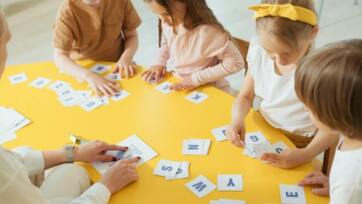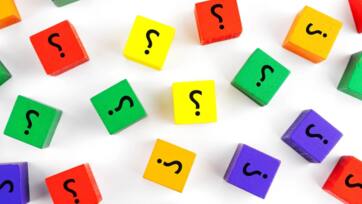Introduction
Players will use visual puzzles to discover rainbow colours by guessing different tone positions. The Quiz requires users to match a rainbow's colours by pinpointing their shades from red to purple. The activity entertains and teaches users about colour theory and how colour affects human perception. This text explores every aspect of the Color Quest visual quiz, including what makes it popular and how gamers experience its gameplay.
The Basics of the Color Quest Quiz
Players encounter different colour shades and must pick or predict the exact names of these tones. The Quiz brings colour puzzles in various pastels and strong colour variations to test your skill. The game presents different colour challenges to keep players learning and recognizing colours better.
The Psychology of Color in the Quiz
Humans respond strongly to the effects of colour on their mental state and emotional reactions. During the Color Quest quiz people will react to colors differently through their color associations. The way people view blue triggers feelings of peace and confidence, whereas red typically generates excitement and immediacy. During this game, our emotions impact our processing because players naturally react to their psychological reactions to colours.
Why Rainbow Colors? The Science Behind It
Natural light creates a rainbow with multiple visible colours that attract human sight. According to Sir Isaac Newton, the rainbow shows distinct colours that match specific light wave sections. Colour Quest uses rainbow colours because they remain sharp and popular among people. These colours form a smooth aesthetic that attracts all players while linking the game challenge with fundamental scientific understandings of light behaviour.
Colour Quest helps players improve their vision detection through coloured displays.
Colour detection works better when you perform it often, and Color Quest gives players a perfect chance to build this skill. The Quiz pushes players to distinguish small differences in multiple-coloured hues by showing various shades. The game develops better color perception which helps people handle tasks in design, art, and marketing better.
Learning Color Theory Through Gameplay
The study of colour systems guides artwork, design, and visual presentation development. The game shows players different colour patterns, including supportive matches, side-by-side comparisons, and opposite colour combinations. While playing Color Quest, gamers will learn to recognize close hues and which primary colours produce secondary ones. The Quiz teaches colour theory while letting players discover useful, practical applications through interactive games.
The Challenge of Identifying Shades and Tints
The Color Quest quiz offers an interesting test of identifying subtle colour changes between shades and tints of individual hues. A darkened colour results from mixing it with black, while a lightened colour results from combining it with white. Participants experience different levels in the game which require them to spot tiny color differences to succeed. The challenging aspects of the game provide an intellectual challenge that people who seek mental stimulation find enjoyable.
The Role of Contrast and Brightness in Color Quest
Colour Quest depends on the visual difference between colours through brightness variations. During gameplay, players experience colours arranged from light to dark, plus high and low contrast. The colour elements determine how comfortable it is to recognize colours successfully. When colours stand out through strong opposites like red and green, they become easier to remember, yet colours that blend better need greater attention. These design principles help the Quiz provide both a difficult learning experience and an aesthetically pleasing result.
Incorporating Fun into Learning Colors
The learning process through Color Quest becomes enjoyable for players. The Quiz enables players to learn through delightful activities. The competitive game of guessing colours becomes an entertaining way for people to study colour theory principles. Players experience both satisfaction and discover new colour knowledge while using the quiz app as either solo practice or team play.
Using the Quiz Enhances Participants' Color Vocabulary
Color Quest develops better colour terminology skills for its users. The Quiz helps users figure out similar colours and discover harder names, such as turquoise, fuchsia, and chartreuse. People who expand their colour knowledge understand the diverse colour range of the spectrum better. Identifying many colours helps professionals maintain accuracy in their design or fashion work.
Accessibility of the Color Quest Quiz
The Color Quest test is enjoyable because of its basic functionality. The program can be accessed on mobile apps or websites, making it useful for everyone. The system makes it easy for users of different age groups and experience levels to participate. Everyone can join Color Quest to learn and enjoy colour theory regardless of age or experience.
The Global Appeal of Color Quest
The game Color Quest appeals to players from all over the world, regardless of their culture or region. Every human culture understands and relies on colour, so people everywhere can understand colour recognition skills. Colour helps people see and know what they experience in tropical nature and city environments everywhere. Because it connects to global colour concepts, Color Quest makes itself understandable to people everywhere.
How Color Quest Relates to Art and Design
Designers and artists use their colour knowledge to create an emotional atmosphere by expressing specific feelings with their designs. Colour Quest helps people learn about art design while developing their colour knowledge through enjoyable activities. Learning about different colours through this activity gives participants a better colour sense, which helps them produce better visual art regardless of their focus area.
Encouraging Creativity with Color Recognition
Colour Quest helps people gain creative skills through its enjoyable task completion and colour exploration activities. From the Quiz start to finish, players develop their colour name skills and their understanding of colour combinations. Users explore colour pairing choices that help them produce fresh ideas in their design, such as spaces, clothing, and images. The Quiz provides an entry point to enable new ideas and inventive thinking.
Building Attention to Detail Through the Quiz
The Color Quest game helps users improve their ability to spot small colour variations. The Quiz requires players to pay extreme attention because it shows colours that differ in barely noticeable ways. When players focus on little colour differences, this exercise strengthens their eyes and brains, which helps them detect fine details in all aspects of their lives, including visual arts quality control and critical problem-solving.
The Role of Feedback in Color Quest
Colour Quest immediately offers players their results, forming a central part of their gameplay. Once players identify their answer they get immediate details about their response accuracy. Players improve their ability to match colours by receiving immediate feedback during each quiz round. Participants build excitement as they cannot help but impatiently wait for their selected answers to be verified. The early results push players to continue improving their answers in every round.
Colour Quest helps colourblind people understand colour better.
Although Color Quest was made to be entertaining for all users it helps color vision impairment patients through specific interface features. The Quiz comes with additional support options so colourblind people can take part in the game activities. Players can solve problems through design elements that support their colour identification skills. The quiz design lets every person benefit and participate equally in the activity.
Conclusion
Colour Quest is more than a standard colour identification activity. It offers an interesting gameplay experience that uses education and artistic elements to help users improve their colour recognition. No matter because you try Color Quest, it teaches colour theory, visual skills, and pleasant gameplay. The easy-to-use colour game inspires people of all ages to experience different hues.










